There is just one native member of the Melanosporum group in Britain, the winter truffle (Tuber brumale). Another member of the group, the Périgord truffle (T. melanosporum), confusingly also known as “the black truffle” or again, “the winter truffle”, has been cultivated in this country but is not native (does not occur naturally).
Winter Truffle (Tuber brumale)
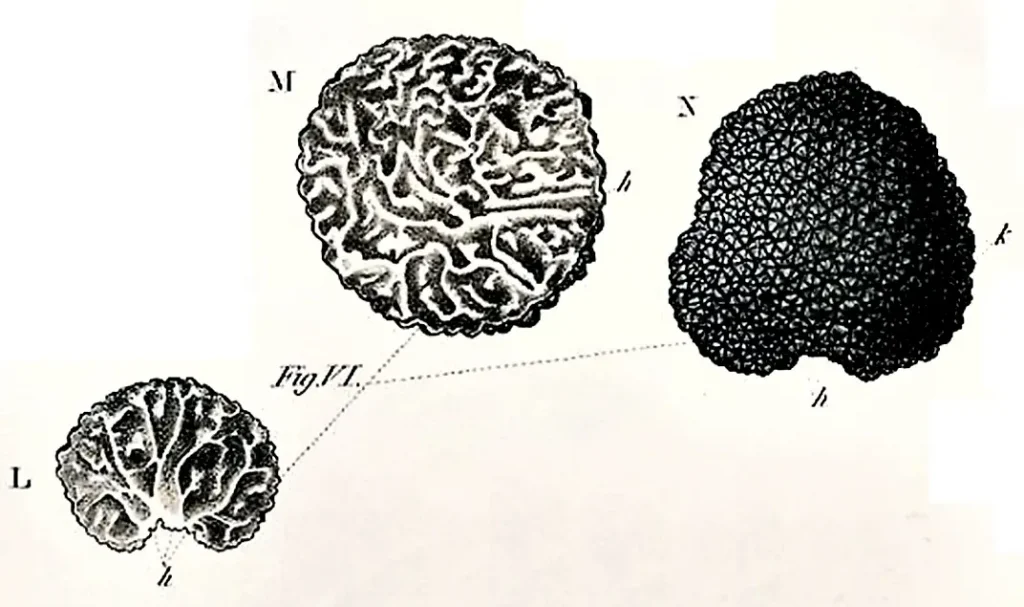
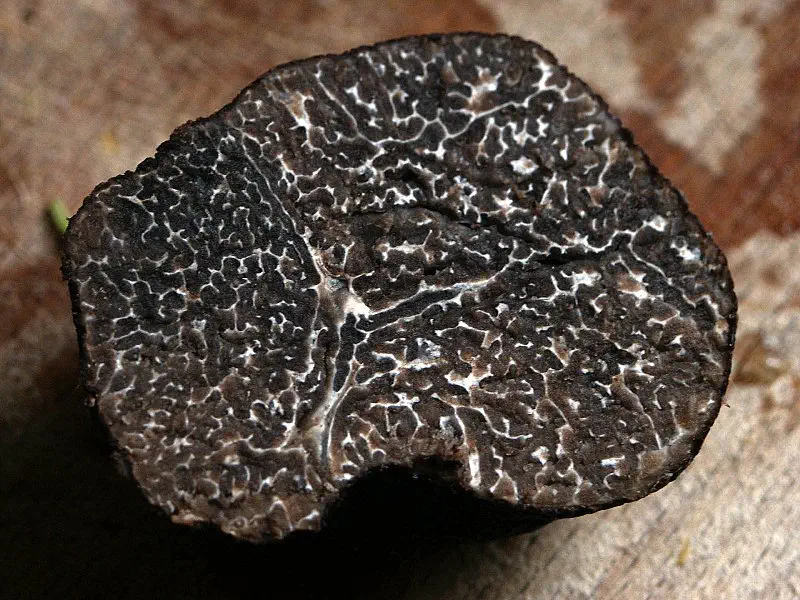
Overseas the black winter or brumale truffle (Tuber brumale) can be confused with the Périgord truffle (T. melanosporum) to which it is closely related with a similar appearance and that they share the same habitat and grow with the same host tree species. One brumale truffle discovery in Wiltshire by The Rev Berkeley was at first thought to be a Périgord truffle .
The species is sold on the continent with its price being about a third or half that of Périgord truffles.
| Common Name: | Winter truffle, Violet truffle. |
|---|---|
| Scientific Name | Tuber brumale Vittad. |
| Etymology: | From Latin brumalis, pertaining to winter. |
| Detailed information: | Trufamania |
| Peridium: | Slightly warty and a brownish black colour. Comes off easily. |
| Gleba: | Grey black. The veins are white, generally long and few in number. |
| Aroma: | Varies with soils and organic matter. Nutmeg according to some. There is a variety with the aroma of musk, the so-called musky truffle (Tuber brumale Vitt. var. moschatum). |
| Shape: | Generally globular. |
| Size: | Usually the size of a walnut. |
| Ripening period: | November to March. |
| Distribution: | In Britain, it is less common than the summer truffle. It has been recorded from southern England (Avon, Somerset, Dorset and Wiltshire). Today, we know truffle hunters finding it in Dorset, Wiltshire, Hampshire, Oxfordshire and West Sussex. It is found with deciduous trees, especially oak, usually on calcareous soils. |
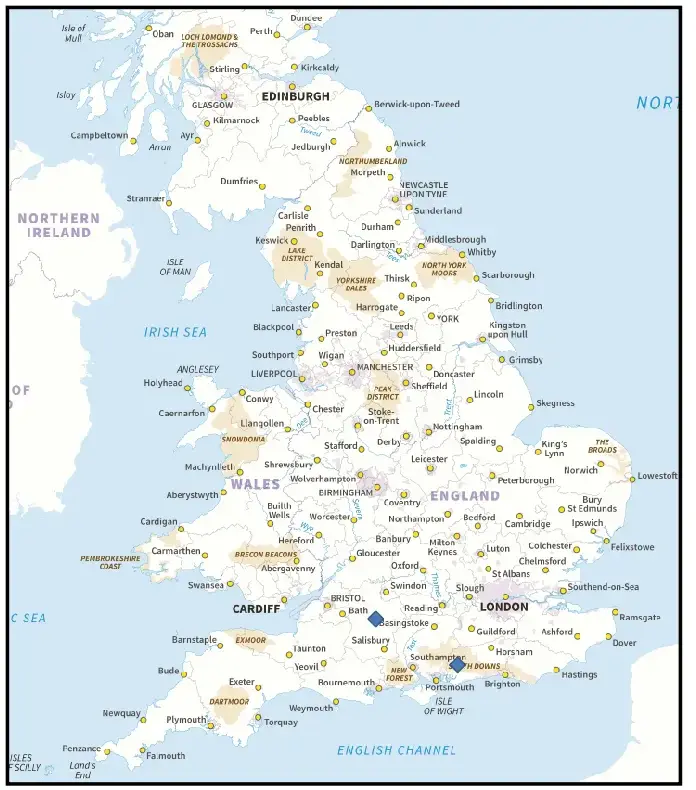
Black or Périgord Truffle (Tuber melanosporum)
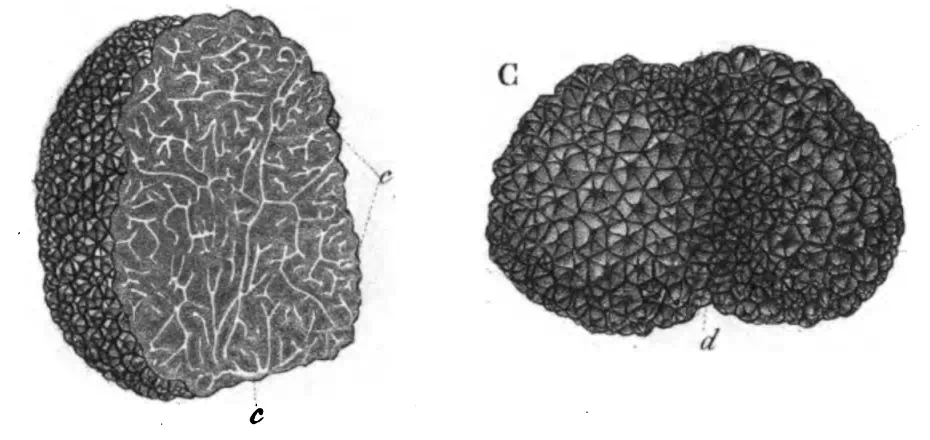
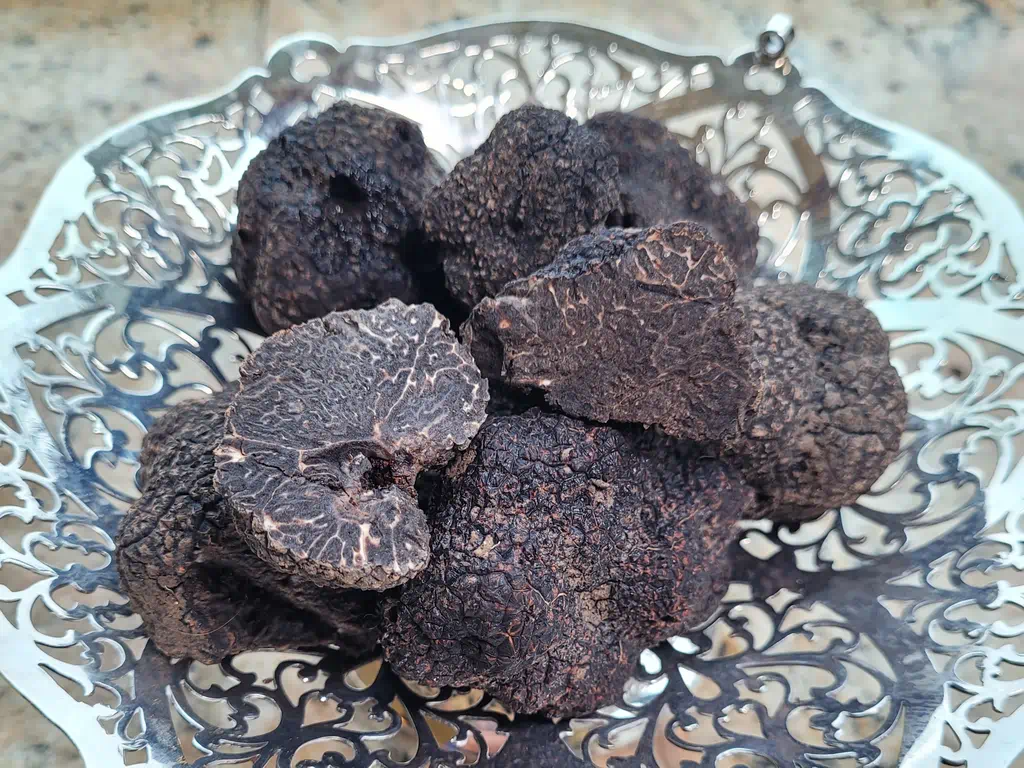
The Périgord truffle is not native to Great Britain, but is included as it has been cultivated here in truffle orchards.
| Common Name: | Périgord truffle (the black truffle, the winter truffle, French black truffle, Precious black truffle) |
|---|---|
| Scientific Name | Tuber melanosporum Vittad. |
| Etymology: | In Latin, melanosporum means ‘with black spores’. |
| Detailed information: | Trufamania |
| Peridium: | Black-brown with small pyramidal warts. |
| Gleba: | Initially white, becoming purplish-black when mature. They have numerous, thin, white, branching veins which turn brown with age. The veins go red when exposed to air. |
| Aroma: | Aromatic and distinctive. The scent is said by some to earthy or nutty with a hint of chocolate. |
| Shape: | Rounder in less stony soil. Irregular / lobed where there are stones. |
| Size: | Typically up to 10 cm in diameter though occasionally larger. |
| Ripening period: | November to March. |
| Distribution: | Wild Périgord truffles are very rare today. They are native in Mediterranean areas such as the Périgord region of France and parts of Spain, Italy, Croatia and Slovenia. They do not grow wild in the UK. Today, almost all of these truffles are cultivated with the main producers being Spain, France, Italy and Australia. They have also been successfully cultivated in South Africa, the United States, New Zealand, Chile, Argentina and in the UK. We are aware of 5 truffle orchards in this country where they have been successfully cultivated though there may be more.
Recent research has shown that the climatic tolerance of these truffles is much broader than previously thought, and it is likely that this is only possible because of climate change. In the wild they are found in well-drained calcareous soils under oaks, poplars, hazels, pines, limes, hornbeams and willows (Salix). Cultivated truffles are grown on the roots of trees that have been inoculated with these truffle spores. In UK truffle orchards, hazel and oak (English and Holm / Evergreen) are the species that are used. Where needed, lime is added to soils to raise their alkalinity. |
